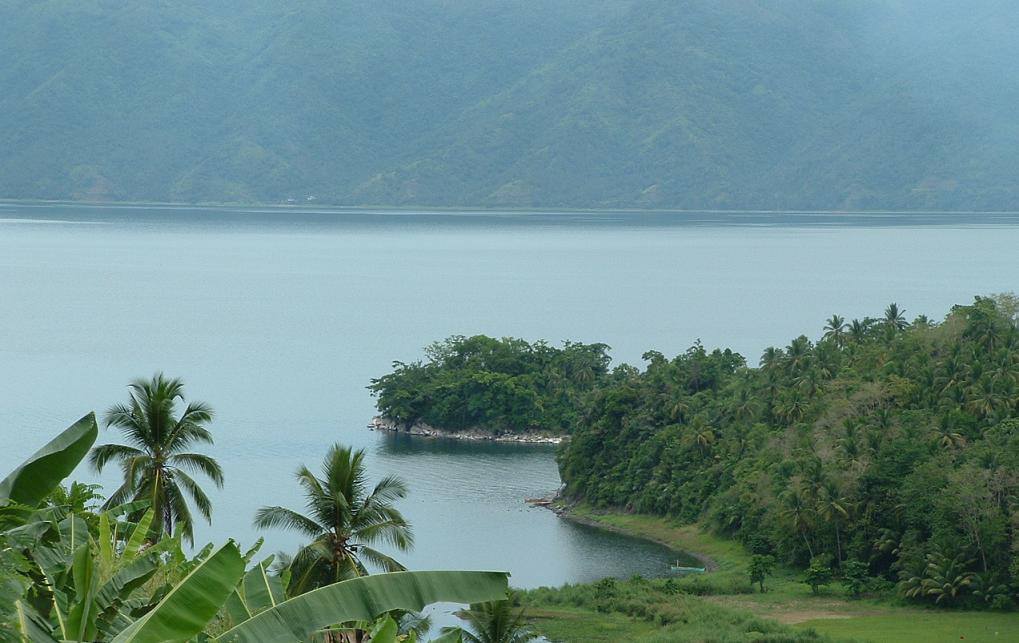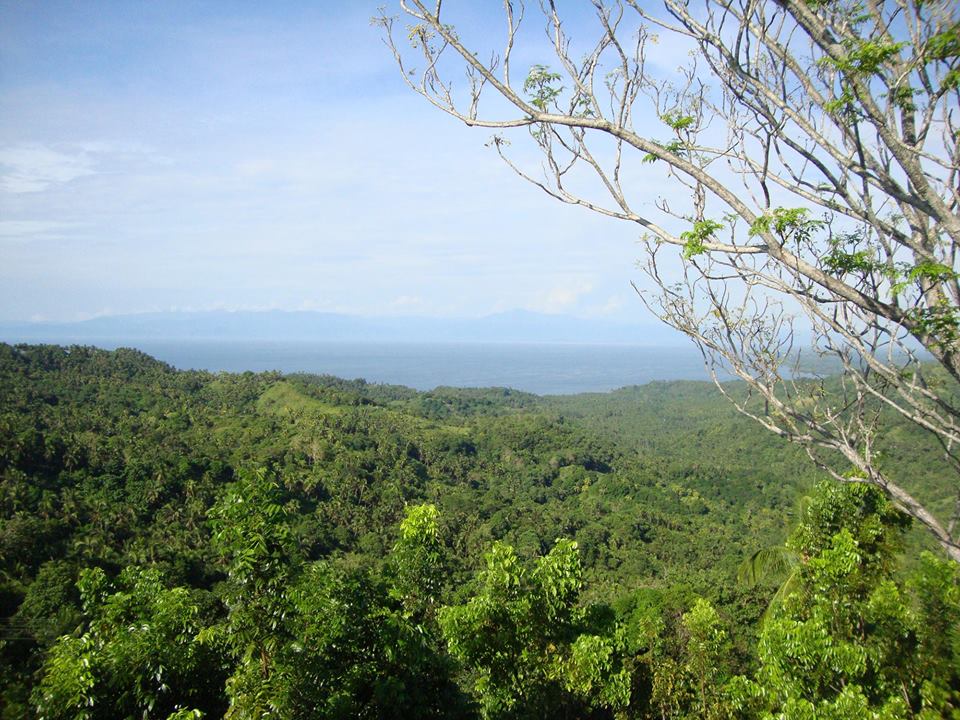
“Human and nature…making amazing adventures.”
Agusan del Norte is one of the five province of Caraga Region (others are Agusan del Sur, Surigao del Norte, Surigao del Sur, and the newly created province – Dinagat Island, which was part of Surigao del Norte before). The province is bordered on the northeast by Surigao del Norte; mid-east by Surigao del Sur; southeast by Agusan del Sur, and southwest by Misamis Oriental. It faces Butuan Bay, part of the Bohol Sea, to the northwest.
The province has 11 towns and they are Buenavista, Cabadbaran, Carmen, Jabonga, Kitcharao, Las Nieves, Magallanes, Nasipit, Remedios T. Romualdez, Santiago and Tubay. Recently, the town of Cabadbaran became a city, later became the capital of the province. Butuan City located at the heart of the province became an independent city for being a highly-urbanized and the capital of Caraga Region.
The name Agusan came from Malay word “agasan” which means “where water flows,” because of the province presence of mighty river that flows from Davao then to the two Agusan provinces – Agusan del Sur and Agusan del Norte, in which Butuan City is the exit point, and empties into Butuan Bay.
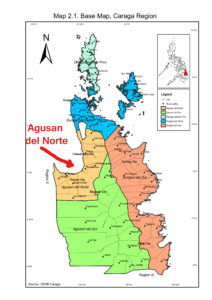 Agusan del Norte was part of Agusan province before in 1967, until such a time that RA 4979 was created dividing the province into two independent provinces: Agusan del Norte and Agusan del Sur.
Agusan del Norte was part of Agusan province before in 1967, until such a time that RA 4979 was created dividing the province into two independent provinces: Agusan del Norte and Agusan del Sur.
Peoples
The aborigines of Agusan were the ancestors of the present day Mamanwas who were driven to the hinterlands by the first wave of Malay immigrants coming from Borneo and Celebes. These people, in turn, sought the protection of the interior jungles because of the forays and the constant raids of “Moro” pirates. The “Moros”, being seafaring people, confined themselves to the coastal areas where they started settlements, leaving the forestall areas to the Manobos. The Manobos dominates the early inhabitants of the province.
Economy
Major agricultural crops in Agusan del Norte are rice, corn, coconut, abaca, banana and mango. The province also produces cassava, durian, pineapple, coffee, vegetables and root crops. The three leading producing crops are coconut, banana and rice.
There was also a noted increase of livestock, poultry, and fish production. Agusan del Norte is known to be a major timber producing province in Northern Mindanao. It has been producing saw log/veneer, pulp wood, lumber, veneer, plywood, blockboard and other wood-based products.
Cultural and Heritage
Ancestral House of the Atega Family, Cabadbaran City. This antique house of Cabadbaran City is originally owned by Don Andres Azura Atega, the chief revolutionary. Although the house was built on 1904, during the American colonial period, its design was heavily influenced by Spanish architecture. The house was built with high quality hardwood such magkuno (iron wood), oak, and bayong wood. It has fifty-five large rooms containing antique chandeliers and fluted sculptures from the Ming Dynasty. With high grade interval of the ladder in the most original front door of the house.
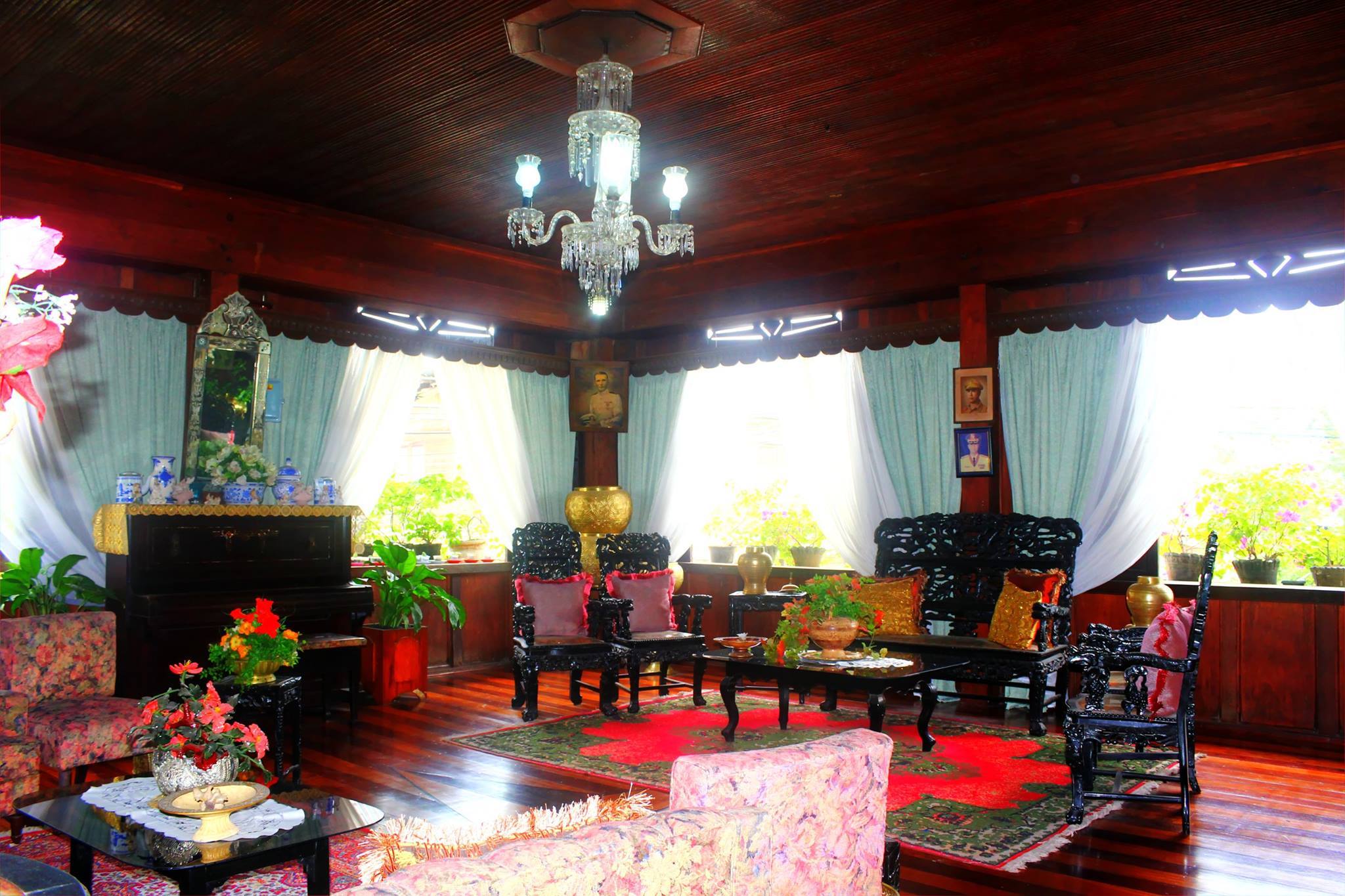
Ancestral House of the Dagani Family, Cabadbaran City. This ancestral house was owned by Don Valentin Dagani and Doña Cecilia Veo of Cabadbaran City. It is located at the corner of L. Funcion and Asis Streets. The house has three large rooms with dimensions of 6×4 meters, with old-style beds. The windows are of old Spanish design and are made out of Capiz shells. The wooden floor is made from Molave (oak) and the columns are all made of whole Magkuno (iron wood) tree. Up to this date, some old equipment can still be seen here such as an old rocking chair, pitchers and glasses.
Ancestral House of the Alburo Family, Cabadbaran City. The home of the Alburo family is located on the corner of L. Dagani and A. Mortola Streets in Barangay 6, Poblacion, Cabadbaran City. It is owned by the couple Valentin Alburo and Crispina Dagani and was built in 1935. The ceiling of the house is painted with drawings of flowers and eagle made by ancient artists in Cabadbaran.
Magellan Marker, Magallanes. Erected in the time of Spanish District Gov. Jose Maria Carvallo in 1872, this edifice located at the mouth of Agusan river in present day Magallanes, is the site of the first catholic mass in Mindanao on April 8,1521. Magallanes, in the olden days was called Baug, formerly the site of Butuan.
Centennial Bitaug Tree, Magallanes. More than 500 years old this was declared a centennial tree by the Phil. Centennial Commission on June 3, 1998. Location: Brgy. Caloc-an, Magallanes.
Our Lady of Assumption Church, Jabonga. After the devastating typhoon in 1876, Fr. Urios instigated Jabonganons to look for a higher ground for a permanent church. Fr. Chambo, SJ, started construction in 1878. Fr. Llobera, SJ, blessed it during the feast of Corpus Cristi, June 17, 1897.Today, it is the oldest Spanish church in the whole Caraga.
Cabadbaran Museum (Museo de Cabadbaran). This is a mini-museum located at the ground floor of Teofisto Guingona Sr. Hall. It is a repository to the town’s old documents, as well as artifacts from Cabadbaran’s 4 archeological sites
Butuan City rich and colourful history reflects the past of the province endowed with the presence of Butuan National Museum, the Balangay Shrine, the Balangay and Kahimunan Festivals
Sumayajaw Festival, Jabonga. Held every August 14 during the town fiesta of Jabonga, is a thanksgiving celebration for the bounties showered by the Heavenly Father through the intercession of the Blessed Virgin Mary, the Lady of Assumption – patroness of Jabonga.
Lisagan Festival, Magallanes. Held every 3rd Sunday of October is an annual celebration that showcases the Mamanwa dance healing rituals. It is a re-enactment of a miraculous healing of a Mamanwa native in 1910 while dancing in front of the statue of the Blessed Virgin Mary. This statue was brought to Magallanes from Las Nieves, Barcelona Spain.
Araw ng Agusan del Norte. This is a founding anniversary celebration of the Province of Agusan del Norte every June 13-17.
Saging Festival, Buenavista. Held every 2nd week of January during Araw ng Buenavista is an Agri Fair that showcases the bounties of Buenavista with special focus on the banana
Dagkot Festival, Cabadbaran City. A religious festival in honor of Nuestra Señora Candelaria (Patron of Cabadbaran). The festival is held in Cabadbaran City every 2nd of February. Dagkot is derived from the local word that means “lighting a candle”.
Mango Festival, Carmen. A two weeks long festival, July 1-16, that pays tribute to Carmen’s main crop – mango. Among the featured activities are: an agricultural fair, food processing demonstration, cultural presentation and sports events.
Baoto Festival, Jabonga. Baoto races held in Jabonga every 3rd week of September. It starts on a Friday and culminates on the following Sunday. The festival pays tribute to the “baoto” or native dug-out canoe. It features, among others, free adventure skills training such as paddling, mountaineering, trekking, caving, and single rope technique.
Lubi-Lubi Festival, Las Nieves. The founding of the Municipality of Las Nieves on June 25, 1963 established the annual commemoration of “Adlaw Hong Las Nieves”. The Lubi Lubi Festival began in 2004 to pay tribute to the “Tree of Life” or the coconut tree which is one of the most important crops in the municipality.
Tawu-Tawo Festival, Remedios T. romualdez. It is a fun, colorful, and meaningful event because it showcases the culture of the ancestors in every 8th day of September. It expresses how grateful are the people of their bountiful harvest and the casting away of evil spirits. This event is usually held in People’s Park. Most of the participants of the event wear a costume of a giant man filled with straw. Then, they make the giant dance, walk, and move around. The attire used by the participants of the Tawu-tawo Festival is adapted to the native clothes made of indigenous materials such as grains, straws, and leaves. The costume makes something like a “scare crow”.
Baoto Festival – Santiago
Tamban Festival, Tubay. Focuses on capturing a good sense of appreciation on the abundance of Tamban or Salmonella in the local waters and to showcase the different palatable dishes as well as preserved items that can be derived from it. Slated on the 27th of July, the festival was first held in 2004 and has proudly produced delectable dishes and preserves such as fresh tamban rolls, tamban in olive oil, dried tamban and among others.
Tourist Spots
Agusan del Norte has outstanding tourist spot destinations aside from its colourful history. Its wonderful geographical settings and physical features of the province make it the best for adventurers out there.
The “Higanteng Bato” or Giant Rock, Cabadbaran City. It measures 124 meters in circumference, 31 meters wide, and 54.13 feet in height and is the largest stone in the province. Below it flows the clean, clear, and crystalline water. It is located in an area that is rich in gold, in Sitio Pirada of Barangay del Pilar, Cabadbaran City, Agusan del Norte.
Amontay Canyon, Nasipit. This interesting rock formation that is 700 meters long can be found 3.7 kilometers from the Maharlika Highway or 28 kilometers from the Bancasi Airport, Butuan City. It is situated in the westward side of the Poblacion, particularly in Barangay Amontay. One can reach the place in 25 minutes by trekking.
Beaches
La Union Beach, Cabadbaran City. Its coastline from the mouth of Camboayon River (La Union) to the mouth of the Cabadbaran River. It covers the beautiful shores of Barangay La Union, Calibunan and Tolosa.
Caasinan Beach, Cabadbaran City. It has picturesque shoreline from Brgy. Cabinet. Located near the beach is an island called Gentle Island, a small island that lies from near the mouth of Caasinan river to the cliffs of Tubay river. This also marks the natural boundary between Cabadbaran City and the town of Tubay.
Tinago Beach, Buenavista. One of Buenavista tourist attractions of many beach lovers. It provides various beach activities and amenities. It has already 15 beach resorts.
Sacol Beach, Buenavista. Dubbed “Gateway to Your Imagination”, provides visitors a perfect romantic getaway where you will find a quiet retreat in guest houses, inns and cottages in the area. They provide different amenities and food for those who will stay overnight in guest houses. Come, relax, reconnect and have fun for a weekend.
Vinapor Sea Turtle Landing Site, Carmen. The beach of Vinapor, Carmen town, has white sand facing crystal clear waters ideal for swimming, game fishing, scuba diving and other water sports. It has also become one of the best nesting and hatching sites for sea turtles, specifically the Hawksville Turtle species. The site of little turtles hatching and crawling to the sea is absolutely breath-taking.
Vinapor Blue Water Resort, Carmen. Along the boundaries of Agusan del Norte and Misamis Oriental ridging the coastal side of Butuan Bay lies the paramount beauty, the magnificent white sand and crystal clear of sea water – the Vinapor Blue Water Resort of Vinapor, Carmen. Its boundaries are Butuan Bay to the east, Barangay San Isidro, Misamis Oriental to the west.
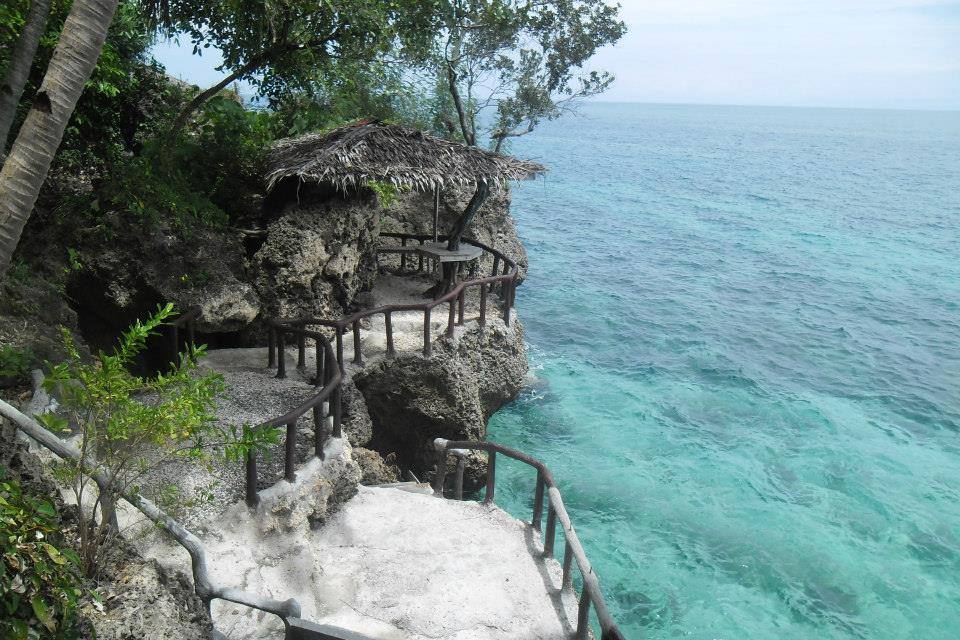
Diwata Cave and Beach Resort,Carmen. The name “Vinapor” was derived from this phenomenal creation of the Diwata Point, where a solid rock structure of ship rear portion is naturally crafted in a contoured plateau overlooking the very proud body of water decorated with colorful corals. Marine life sanctuary and sea turtle land site are found in this area. It is noted that this coastal area became the breeding place of sea turtles because of most number of sea turtles lay and hatch eggs.
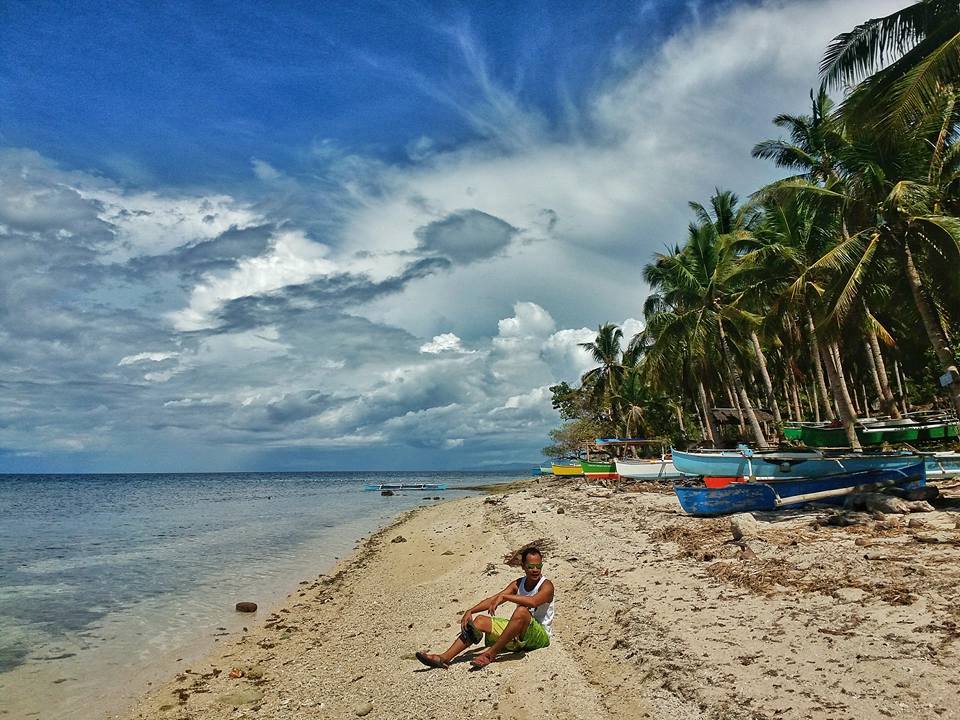
Kimberry Beach Resort. Carmen. Come, relax and see the blue crystal waters of Carmen Beach. Stay at the winsome Kitana with fully developed cottages and air-conditioned rooms. Formerly known as Kimberly Park and Restaurant, it was fully developed and was open to the public in November, 2002.
Carmen Veranda I and II, Carmen. Carmen is proud of its many beautiful spots. One of which is the Carmen Veranda Beach Resort, a place to unwind and have fun a cool atmosphere embraces the place where you can swim and relax yourself. It is good for picnic and swimming.
Bolihon Beach Resort, Carmen. One of the gems in the coastal area of Carmen with lots of coral in the beach line. A white beach having hidden in a little cove covered with rocky mountains and trees along in a clear bluish water and tempting horizon.
Mayor Pio A. Monton Great Lake Resort, Jabonga. Jabonga boasts of a resort near the town proper, the Mayor Pio A. Monton Great Lake Resort. The ambiance of the place is the desire of everyone who wants to enjoy nature and take a rest from the madding crowd. The flowers in bloom can satisfy the longings of the heart and soul. The beautiful sunrise soothes the nerves and tells us that it is still a beautiful world.
Sogod, Usa-Usa and Tabunan Beach Front, Kitcharao. The beachfront covers the foreshore land of Sitio Sogod, Usa-usa and Tabunan, all of Barangay San Roque. This occupies an area of 4.5 hectares and is located 400 meters away from the Maharlika Highway. The beach is a very good place for relaxation and picnicking. Its area is rich in fresh water shell called “igi” which is edible when boiled and it is also a source of calcium for strong bones and teeth.
Centennial Beach, Magallanes.
Silver Lining Beach, Magallanes.
DLH Beach Cottages, Magallanes.
Vicar Beach Resort, Magallanes.
Caloc-an Beach Resort/Hotel, Magallanes.
Baryo Fiesta By The Sea, Nasipit. A tropical beach tucked away in the western side of Nasipit, offers amenities for the sun-seekers. It is in Cabagtucan, Ata-Atahon, Nasipit and is 1.5 kilometers from the Maharlika highway.
La Vista Conchita Beach, Nasipit. La Vista Conchita Beach is a classic provincial beach on the Nasipit easternmost stretch at Cabagtucan, Ata-Atahon, Nasipit, Agusan del Norte. It boasts of the biggest land area among the beaches in town with an area of 5,042 square meters with a beachfront of 160 meters.
Man Sand Beach Resort, Nasipit. Man Sand Beach Resort is located along the seashore of Barangay Cubi-Cubi, Nasipit, Agusan del Norte. It is more or less three (3) kilometers from the national highway and Cubi-Cubi junction. It can be reached by a tricycle, a motorized cab, a public utility jeepney or by van. In going to this place, you can pass by the Cubi-Cubi Elementary School, then the fenced property of St. Joseph Institute of Technology.
Amontay Beach Resort, Nasipit. This resort located at the western part of the municipality is frequently visited by both local and foreign tourists. It offers variety of exciting water sports amenities from wakeboard, banana boat, speed boat to jet skis. Its land sports amenities like ATV motor bike is also a favorite sport for all ages.
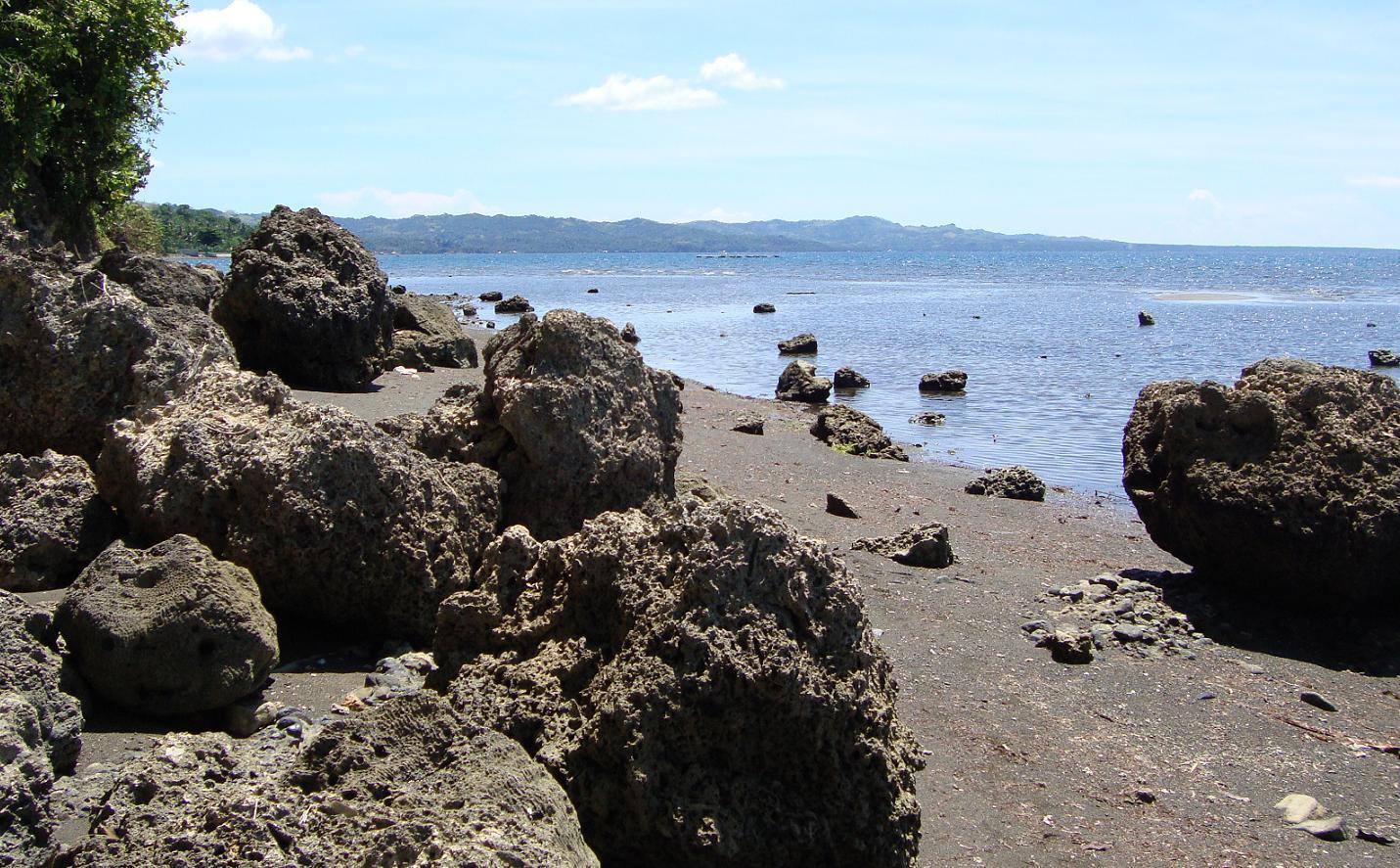
Lucbon Gamay, Tubay. The white sands of Lucbon Gamay may not be comparable to those of Boracay’s but for those who love to spend their time on the beach during weekends and summer, this tranquil beachfront is a treat Tubay is quite proud to offer. Set in a lush tropical seafront, Lucbon Gamay is a little cove littered with coconut trees and springs ideal for those who want to escape everyday life and just want to relax. Its clear seawaters are ideal for swimming and are home to a variety of sea corals, fishes, starfish, seashells, seaweeds snorkeling fan will surely admire.
Falls
Tacub Falls, Buenavista. One of the potential tourist destinations of Buenavista are Tacub falls and caves of Rizal and Macalang. This is a series of falls that runs from the sitios of Barangay Rizal leading to the 3rd falls that fall on the area of Barangay Macalang. You can reach the place through a motorsikad. The distance of the ride is about 9 kilometers from the Poblacion of Buenavista while the 1st and 2nd Tacub falls found in Rizal are 1 kilometer away.
Mindagat Falls, Buenavista. It is located more or less 1,800 kilometers from Sangay proper of Buenavista. The presence of wild flora and fauna adds beauty and charm of the place. The attraction of this falls is its successions of falls into three parts.
Faustina Falls, Jabonga. The falls owned by private individuals. For its maintenance, the management is requesting a little amount from picnic goers/ tourists.
Lambingan Falls, Jabonga. The falls is situated at Barangay San Jose. Its height is approximately 5 meters with fast flowing waters cascading on it. As its name suggests, it is a great place for romantic escapades. If you want to develop, intensify your relationships with your special someone or want to restore, renew broken relationship, this is the best place to go.
Mayugda Falls, Jabonga. It is situated along the road at Purok 1 Poblacion Jabonga. It is just a short three-layer waterfall with an approximate measurement of 2 meters. Passers by really admire this naturally cool, attractive and multi-level waterfalls.
Tangon Falls, Kitcharao. The waterfall is located in Sitio Tangon, Mahayahay which is 1.5 kilometers away from the nearest access road of Upper Mahayahay. The beautiful natural landscape of the park is accentuated by its 20 meter high waterfalls surrounded by the verdant green trees and colorful wild flowering plants. The place is good for picnicking and relaxation.
Buntalid Falls, Kitcharao. The two series of waterfalls located in Sitio Buntalid are potential sites for tourism development most especially the surrounding areas are developed into fruit plantations. It is reached by walk with a distance of 1.4 km. from the national highway.
Ibuan Falls, Las Nieves. Located at Barangay Ibuan, this waterfall is 150 meters away from the barangay center. Falling 19 feet, local residents enjoy trekking and swimming in this area. The local community takes pride in this wondrous gift of nature.
Tagnote Falls, Remedios T. Romualdez. The Tagnote Falls is located in Sitio Tagnote, Barangay San Antonio, Remedios T. Romualdez. It has a distance of 1.5 kilometers from Barangay San Antonio. With a height of 5 meters from the ground falls, the river covers an area of 10 square meters, which can accommodate fifteen people to bathe at a time. The place is also ideal for camping because there are plenty of surrounding trees that provide shades.
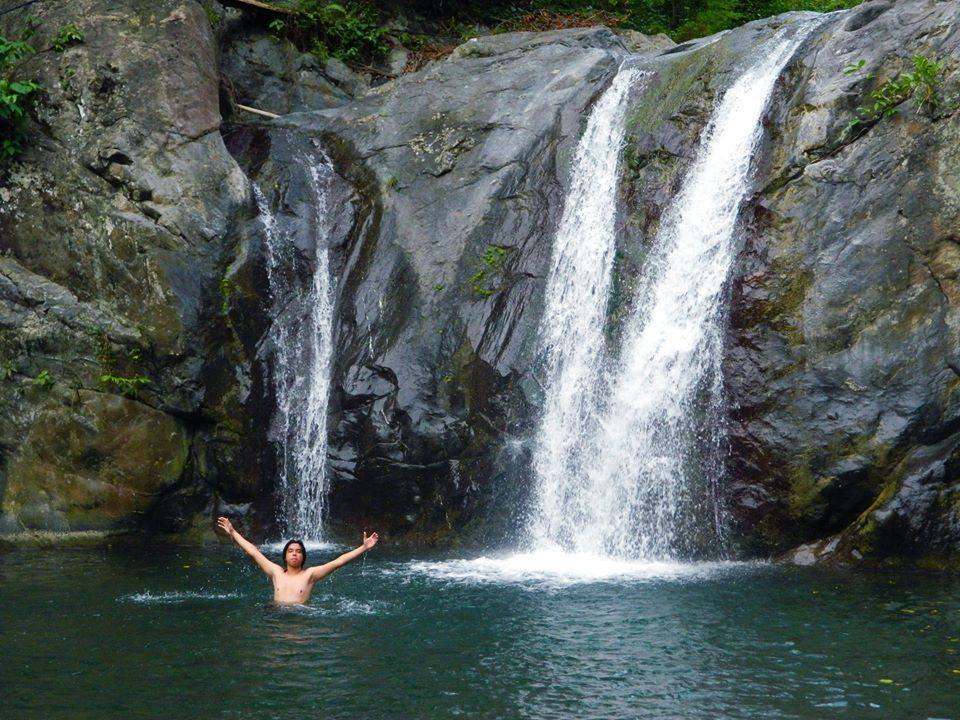
Sak-a Falls, Remedios T. Romualdez. The Sak-a Falls is located in Barangay San Antonio, Remedios T. Romualdez. It will take two hours to travel from San Antonio towards the waterfall. The first stream of the falls is not ideal for bathing because the water flow is too strong. The second and third streams however, has deep crystal-clear waters and is ideal for swimming. The falls are surrounded by large trees so it is also an ideal place for picnic. This place is especially stunning when reaching noon time as the flow of water sparkle like crystals when hit by sunlight.
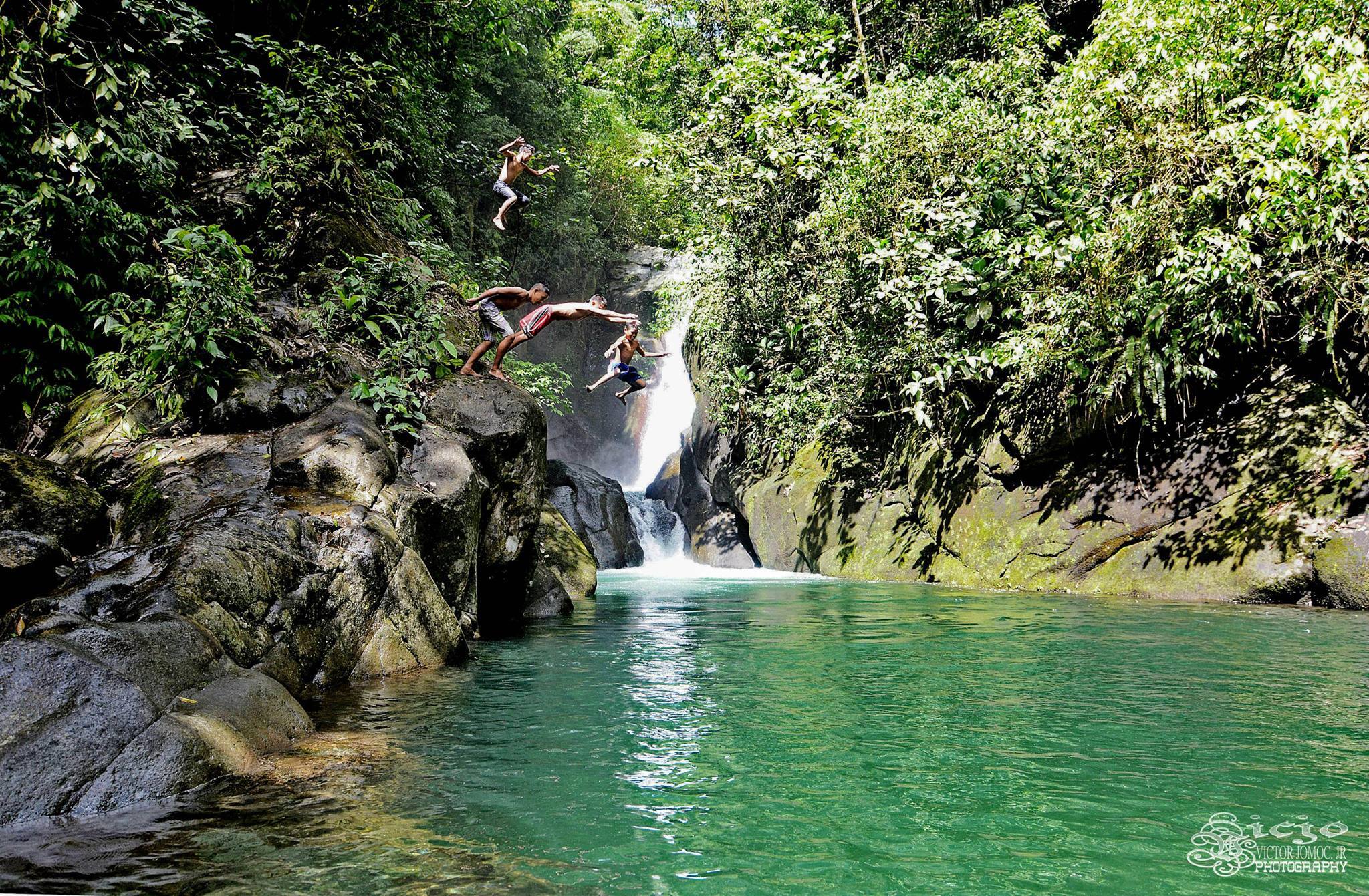
Pantagan Falls, Remedios T. Romuladez.
Katza Falls, Remedios T. Romuladez.
Pinagsabangan Falls, Remedios T. Romuladez.
Bulawanon Falls, Remedios T. Romuladez.
Pandayan Falls, Remedios T. Romuladez.
Kahungguhan Falls, Remedios T. Romuladez.
Kazambato Falls, Remedios T. Romuladez.
Magtangilihin Falls, Remedios T. Romuladez.
Pamumuron Falls, Remedios T. Romuladez.
Kiera Falls, Remedios T. Romuladez.
Guinaringan Falls, Santiago. The site is within an estimated area of one hectare surrounded by trees. The falls is estimated to have a height of 10.50 meters and a width of 5.40 meters. The river has a width of 7.60 meters and a depth of 1.63 meters.
Tagbabayong Falls, Tubay. Splashing in cool, freshwater from a falls or simply watching its falling water is an enjoyable experience that Tagbabayong Falls may tender. This 20-foot, three-tiered waterfall is surrounded by trees and wild flowers and bordered by big mossy rocks. Its rustling sounds can entice a visitor to take a plunge into its waters and feel its refreshing and relaxing effects.
Springs
Kibugas and Panagasian Springs, Buenavista. These springs are found in the Sitio of Lomboyan, a part of Barangay Guinabsan, Buenavista. Though smaller compared to other waterfalls, its coolness and surroundings are captivating due to the presence of boulders around it and the refreshing natural mineral water that quenches thirst.
Mayong Spring, Buenavista. As you go along trekking towards Linao-Linao, Buenavista, you will enjoy the promising coolness of the spring at the foot of Puting Bato. You will surely treasure bathing at Mayong Spring with its refreshing natural mineral water that continuously flows.
Anibongan Spring, Kitcharao. The Anibongan spring is located in Sitio Anibongan, Barangay Crossing. It is accessible by motorized vehicle. It discharges about 1,000 gallons of water per minute. The Bureau of Fisheries and Aquatic Resources (BFAR) Outreach Station Fish Hatcher – nursery of giant tilapia and carp, gets its water supply from this spring.
Puting Tubig (White Water), Las Nieves. The Puting Tubig (white water) located in Barangay Maningalao is one of the main water sources in the community utilized by households and used to irrigate rice fields. It is a cold spring with bluish, clear water which resembles glass when viewed from a distance.
Salt Spring, Kitcharao. Believed to contain medicinal qualities, this spring located at Sitio Asinan, Barangay San Isidro, is amazingly salty despite its distance from the sea. With traces of sulfur that gives the water its color, local residents assert that skin diseases such as scabies, ringworm and others can be cured by taking a bath using the water from it. Some call the Asinan Salt Spring Pusod ng Dagat (bellybutton of the sea).
Mapaso Hot and Cold Spring, Santiago. It is one of the prime eco-tourism destinations in the province. It is located in the western part of Barangay La Paz, about 3.5 kilometers from the town and one kilometer from the village of La Paz. This site can be reached through any land vehicle from the town proper to the riverside, then can be crossed through motorized boats through the Kalinawan River. From the river, you have to walk about 690 meters uphill.
Canoeing
Lake Mainit, Jabonga. Situated 80 ft. above sea level with a mean depth of 128 meter, the lake is a confluence of 28 rivers. Its area of 17,430 hectares with a total shoreline of 50 kilometers covers part of Agusan del Norte (Jabonga, Kitcharao, Santiago) and Surigao del Norte (Mainit,Alegria and Sison). It is known for its pidjanga, gabot, banak, haw-an, gi-ngaw,igi and kasili and is natural habitat to some endangered Philippine flora and fauna. Migratory birds from Russia and Japan and native flowers –pagosi and tabukali are its unique attractions.
Kalinawan River (Jabonga to Tubay). Declared as Caraga’s cleanest inland body of water, this 29.1 kilometer of pristine and picturesque river is Lake Mainit’s only outlet. It passes through the municipalities of Jabonga, Santiago, Tubay before it finally empties into Butuan bay. By history, it is one of the oldest trading and missionary routes in the Philippines. Its historical past (part of the Old Kingdom of Butuan even predates Philippine history. The river is fishing ground to the mamanwas since immemorial. The mamanwa tribe who inhabits around the lake and this river is the oldest indigenous tribe of the Philippines.
Parks
Manlangit Viewing Park, Buenavista. As you advance to the top of Manlangit View Park, you will be overwhelmed by the magnificent view of the horizon and the Poblacion of Buenavista and the City of Butuan. Its elevation gives you an unimaginable experience and the refreshing valleys breezes you will enjoy add up to the solace and soothe one’s soul.
Mt. Carmel View Deck and Park (Marcos Park), Carmen. One of the highest peaks of Agusan del Norte, the Mount Carmel View Park that has an elevation of 810 meters above sea level. It is located along the national highway and a few meters away from the poblacion. This peak is called the show window of Caraga, on the one side we can see the vast sea waters and shorelines bordering Agusan del Norte and Caraga Region. On the other side, we can appreciate the green and thick forest and mountains.
Looc Busay Camping Site, Jabonga. Looc Busay is good for picnics, for a family get-together or just for bonding with friends. It is also a place for reflection for someone who is looking for answers for in-depth questions about life and a refuge for a weary soul.
Top Ridge Trekking and Camping Site, Jabonga. The Top Ridge is a free land to go for trekking. When you’re on top of it especially on clear day you can see Camiguin Island on one side and the Lake Mainit on the other side. Dinarawan Trail trekking is a five-hour breathtaking experience passing two waterfalls.
The Malacañang Park, Kitcharao. The Malacañang Park is located in the Southwestern part of Barangay Crossing. Overlooking Lake Mainit with an elevation of more than 100 meters above sea level and covering about 10 hectares of forest area is one of the interesting features of the park. The soil is composed largely of lime rock with small percentage of fine soil. Different species of trees, shrubs, grasses, vines and wild plants are present.
The Lantawan Eco-Park, Kitcharao. Kitcharao is endowed with eye catching natural landscape and panoramic view of Lake Mainit. It is located in the borderline of Barangay San Roque and Sitio Little Baguio of Barangay Crossing with an elevation of 150 meters above the lake. It has an area of 477 hectares of forest land within the Kitcharao Reserve and Communal Forest.
Kamatayan Cliff, Las Nieves. Overlooking the Ohot River, the Kamatayan Cliff at Kilometer 22 Barangay Lawan Lawan, is a panoramic vista that inspires awe and admiration to the Great Creator’s hand. This two kilometer ravine is the best place to do bird watching, hiking, trail riding, rappelling and other exciting outdoor activities. Relish the sensation as Mother Nature welcomes us to her playground and embraces us with her breath of misty fog.
Barangay Balungagan, Las Nieves. Unfortunately, most residents of Las Nieves are largely unaware of the fact that nature’s playful obstacles of single tracks, massive slabs of boulders and mystical streams and caves exist in Barangay Balungagan. The crevices and almost magical pool reminiscent of King Arthur’s Avalon incites an outdoor enthusiast’s imagination. A wonderful hiking destination, the cold stream water is a revitalizing reward at the end of your destination.
USS Narwhal Landmark, Boardwalk, and Gazebo, Nasipit. The USS Narwhal Landmark is located near the Nasipit Port in Agusan del Norte. This site is part of a tourism complex that includes a boardwalk that leads to a Gazebo on top of an islet in the southern-most end of Nasipit Harbor. It was named after the USS Narwhal submarine.
Hi Hill Forest Camp, Tubay. Mini-camping, family outing and trekking stop! These are but few of the things that Hi Hill Forest Camp offers.
Set up at the peak of a hill in Sitio Beto, Barangay 2 Poblacion, Tubay, Agusan del Norte, Hi Hill Forest Camp is a newly established venue that offers a scenic view of Tubay and its neighboring areas that include, Mt. Mas-ai and Mt. Hilong-hilong in the east; the majestic peak of Mt. Mina-asug in the north; on the westside is the bluish waters of Butuan Bay and in the south is the soundless Kalinawan River.
Camp Telesfora. Tubay. The Doña Telesfora L. Ong Oh Program and Training Center (formerly Camp Telesfora Ong Oh) situated in Barangay Doña Telesfora, Tubay, Agusan del Norte is a five-hectare campsite. This lush area was donated by the late Doña Telesfora Ong Oh, a generous lady who was an active Girl Scout herself, to the Girl Scouts Agusan Council on March 22, 1978. Since then, the campsite has played host to a number of local and national camping and scouting rendezvous.
Lake
Lake Mainit, Jabonga. It is the fourth largest lake in the country. It has a total area of about 17,060 has. Its lakeshore has a total length of 62 km. It has 28 rivers and creeks that serve as its tributaries. Puyo River is the biggest tributary to Lake Mainit. This lake is more than 30 m. above sea level, mean depth is 128 meters and the deepest part is more than 300 meters. Its only outlet, Kalinawan River (29.1 km.) empties into Butuan Bay. Lake Mainit is known for its pijanga, gabot, banak, haw-an, gi-ngaw, igi, kasili and bug-wan – rare fish specie found only in this lake and is a natural habitat to some endangered Philippine flora and fauna. Migratory birds from Russia and Japan and native flowers –Pagosi and Tabukali are its unique attractions.
Rivers
Kalinawan River, Jabonga. This 29.1 km. of pristine and picturesque river is the only outlet of Lake Mainit. It passes through the Municipality of Jabonga, Santiago and Tubay before it finally empties into Butuan Bay. In history, it is one of the oldest trading and missionary routes in the Philippines. Its past (part of Old Kingdom of Butuan), even predates written Philippine History. The river is a fishing ground to the Mamanwa Tribe.
Baug River, Magallanes. The quiet & placid water of the Baug River makes it favorable for cargo ships to dock and anchor at its waters. Fishermen abound in this area, making this river another avenue for economic enhancement.
Agusan River, Butuan City. It is the third largest river basin and the third longest river of the Philippines with a total drainage area of 10,921 km² and an estimated length of 350 kilometers from its origin. The headwaters of the river is found in the mountains of Compostela Valley, near its border with Davao Oriental and east of Tagum City. It flows through the wide Agusan River valley which measures 177 kilometers from south to north and varies from 32-48 kilometers in width. It finally drains into the Butuan Bay at its mouth in Butuan City.
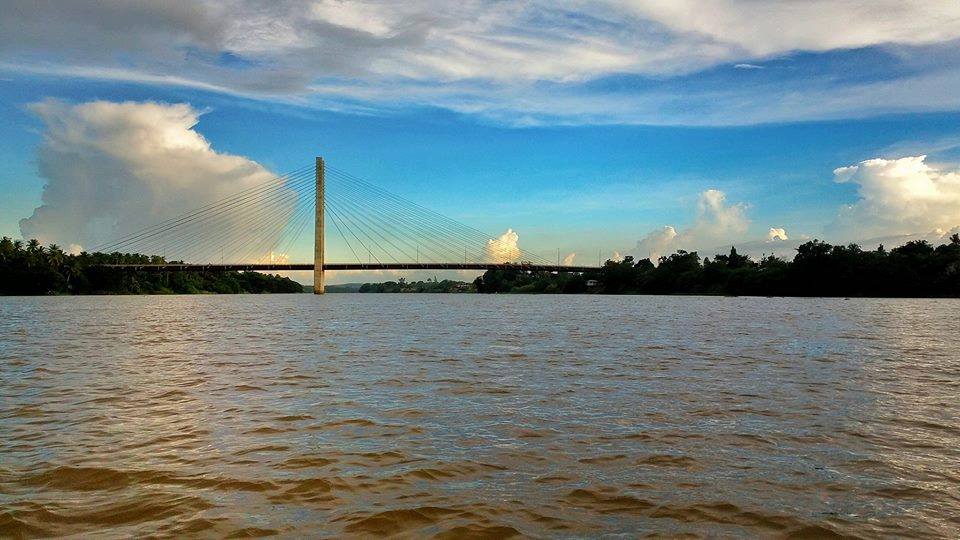
Aciga River, Santiago. Aciga River flows through the Poblacion from the eastern side of the mountain passing through the tribal villages of Matingue, Kasagayan, and Pangaylan. Then it goes to Kalinawan River in Barangay La Paz.The source of the river is from the creek of Talapga, Sinawsawan and Canticol. Its length is approximately 14.5 kilometers and a width of 80 meters. The river’s raging waters have strong torrents that make it difficult for anyone to cross.
Mountain Climbing
Mt. Hilong-hilong, Cabadbaran City. The mountain is 2,012 meter above sea level. Straddling over the eastern portion of Cabadbaran and RTR is Agusan del Norte and Caraga’s highest peak. Seven major waterfalls, an ancient rock art, a carpet of giant white anthuriums, still undetermined number of virgin caves, nesting site of the critically endangered Philippine Eagle, habitat of the Philippine wildcat, flying squirrel, tarsier , and microscopic flower not found anywhere else in the Philippines (German botanist circa 1920) are just some of its main features. By degree of difficulty, it is recommended to climbers with intermediate and expert skills only. A climb to the peak via Malvar Trail takes 4 ½ to 5 days. This mystical mountain was venue to the 17th national MFPI mid-year climb in 2002.
Mt. Mabaho, Santiago. The mountain is 1,823 meters above sea level. Besides being Caraga’s second highest peak, it is also the K2 of Mindanao. Its massive peak of wet solid rock rising acutely to 80-90 degree angle makes it almost impossible to climb without gears. Except for a native “gamhanan” of old, according to legend no one has yet conquered its peak to this day. Known to natives as “Panlabaw” it is an intriguing destination for experienced mountaineers, technical climbers and extreme adventurers.
Mt. Mas-ai, Cabadbaran City. The mountain is 1,680 meter above sea level. Located at Brgy. Del Pilar, Cabadbaran is another high peak. Among its features is Lake Balwang. It is negotiable in 3 days. It was venue to MFPI’s Mindanao in 1997.
Mt. Mayapay, Butuan City. The mountain is 675 meters above sea level. Occupying part of Butuan and Buenavista, this mountain is closely associated with the Higa-onon tribe. It is the most accessible climbing destination from Butuan City. It is negotiable in a day and is a perfect fun climb destination.
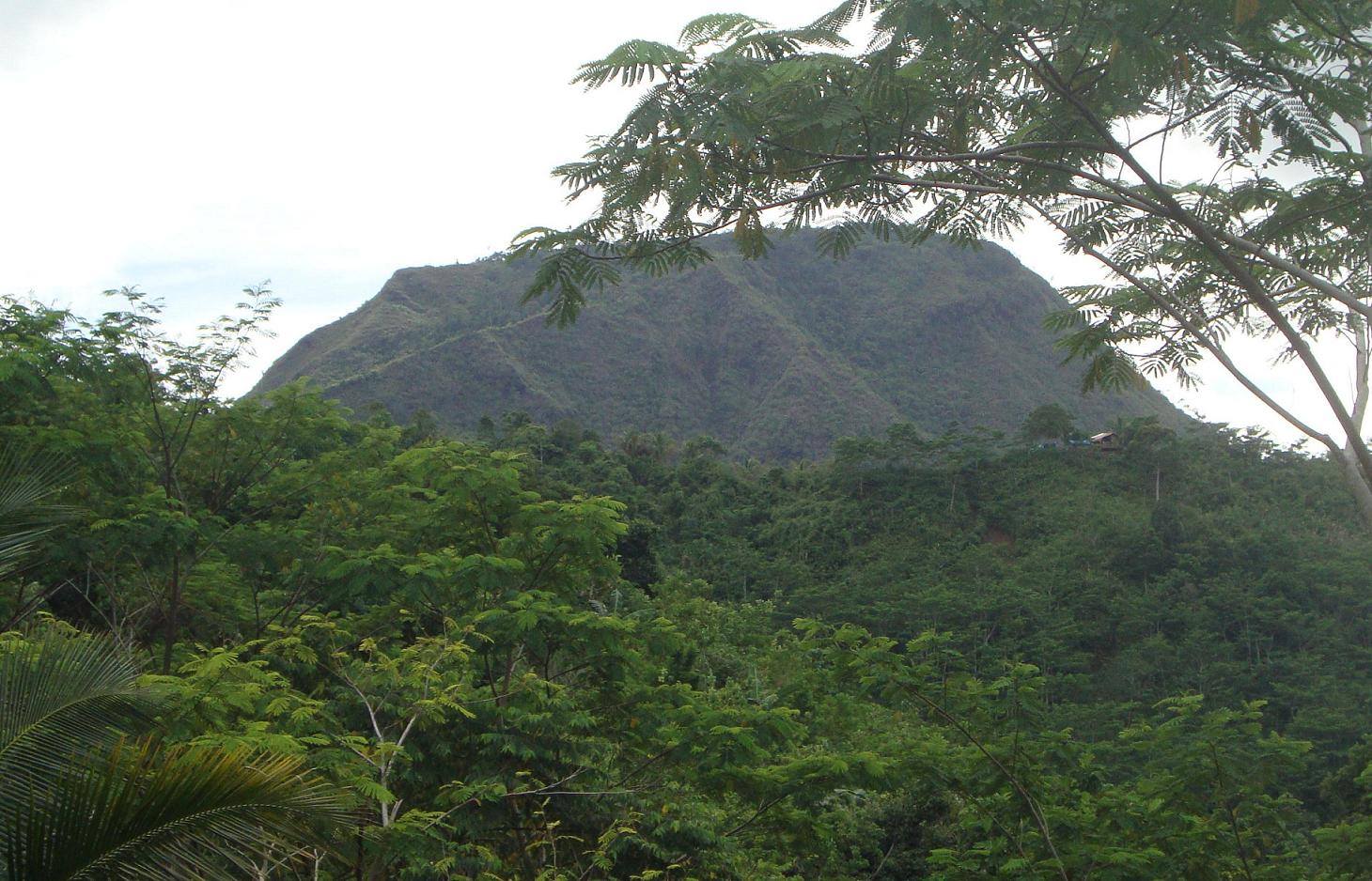
Mt. Mina-asug, Tubay. The mountain is 534 meters above sea level. Located in Brgy. La Fraternidad, Tubay, it is negotiable less than a day. It is an ideal practice climb desitnation for beginners.
Kasunugan Hill, Nasipit. Kasunugan Hill is a range of hills located in Amontay bounded by Barangay Camagong in the east through Amontay Canyon, Sitio Alicapawan and Tabon in the south and Sitio Crasher in the west. It is a five (5) kilometer walk from the highway. Ascending it, one can experience its cascading springs and wide open steep trail. “Tangad – tangad”, as the local folks call it, is the thriving vegetation in the area, along with some trees.
Scuba Diving
Diving in Carmen is an excellent 80 ft. of visibility with 15 diving sites. Reef life rich with soft and hard corals plus abundant reef and pelagic fishes. Profile ranges from sloping walls to cliffs with depths from 40 ft. to over a hundred, with generally sandy floors. Known diving sites in Carmen such as Poblacion Dive Site, Tagcatong Dive Site 1, Tagcatong Dive Site 2, Cahayagan Dive Site, San Agustin Dive Site, Gosson Dive Site 1, Gosson Dive Site 2, Gosoon Dive Site 3, Vinapor Dive Site 1, Vinapor Dive Site 2, Vinapor Dive Site 3, Vinapor Dive Site 4
Jabonga Reef and Looc Point Dive Site, Jabonga. These are the two of Jabonga diving sites. Jabonga Reef 1 otherwise known as Vito Wall located in Barangay San Vicente is a good dive site. It has crevices, caves, overhangs, alleys and walls with depths ranging from 45 to 200 feet. Pelagic abound together with snappers, sweet lips and trevallies. Looc Point is another dive site located in San Vicente. Two more dive sites still located in San Vicente are generally rock formations. Other dive sites are San Jose Point in Barangay San Jose and Magdagooc Point in Barangay Magdagooc. Fish life is bountiful in these diving sites. People who are really fond of scuba diving will really find these dive sites thrilling, fascinating and amazing.Jabonga has a total of 6 diving sites and
Lawigan Point Diving Site, Tubay. The site are generally rock formations, crevices, caves, alleys, overhangs and walls with depths from 45 ft. to over 200. Pelagics abound together with snappers sweetlips and trevallies.
Snorkling-Skin Diving
Gosoon Fish Sanctuary,Carmen. This fish sanctuary is located at Barangay Gosoon, Carmen, Agusan del Norte. It is 100 meters away from the main road. It was established in the year 2000 with a total land area of 10 hectares. Eight hundred (800) seedlings of mangrove were planted along the seacoast. But because of unavoidable circumstances only very few are alive.
Cahayagan Marine Fish Sanctuary, Carmen. Cahayagan Marine Fish Sanctuary is located in Barangay Cahayagan, one of the rural barangays of the municipality of Carmen in Agusen del Norte. Bounded in the north by San Agustin, to the south by Barangay Tagcatong, to the east is Butuan Bay and to the west is the Municipality of Magsaysay in the Province of Misamis Oriental. Surrounded with fringing corals of Acropora and Non Acropora.
Tagcatong Marine Sanctuary, Carmen.
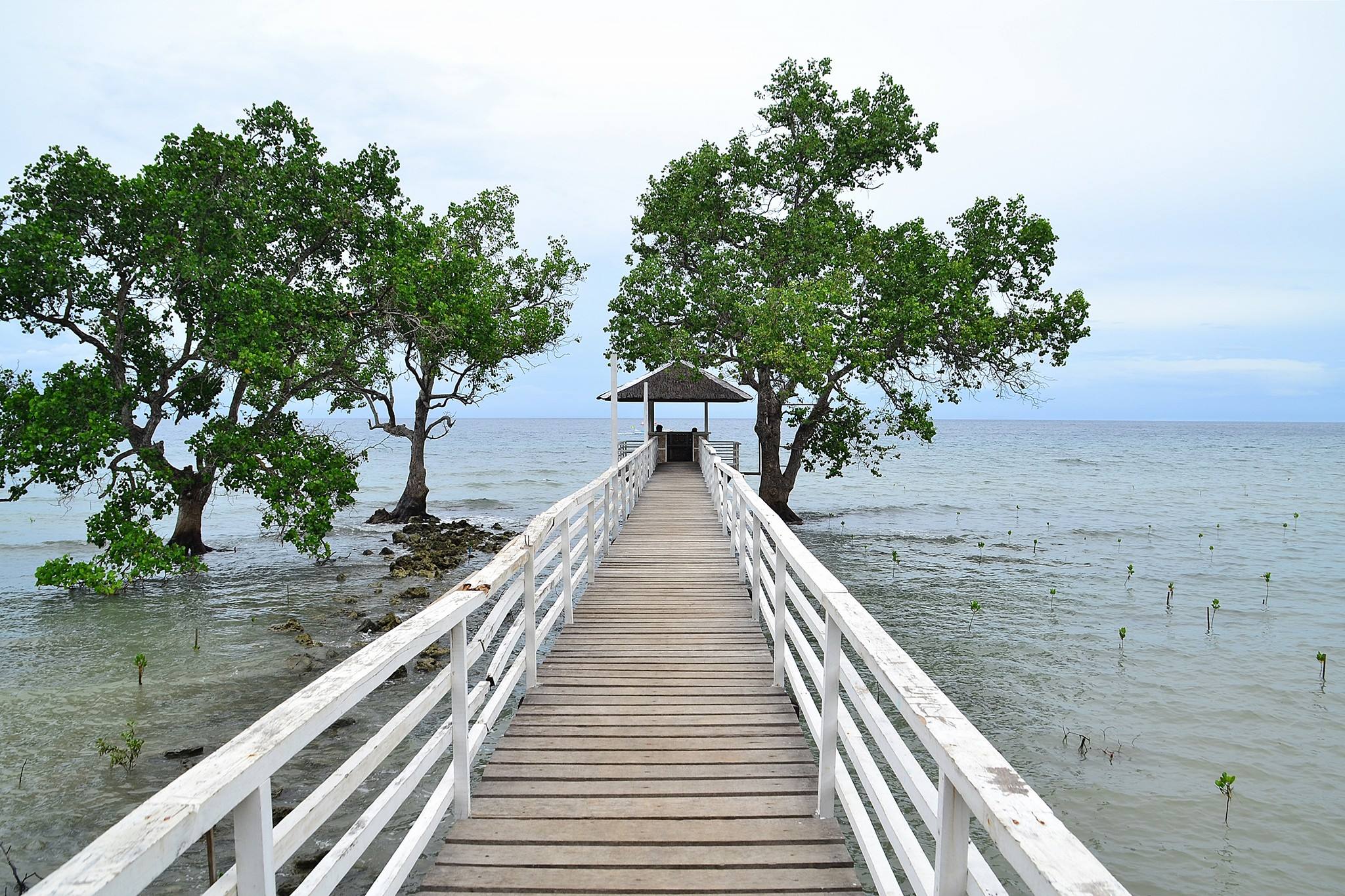
Amontay Cove, Nasipit
Caving
Humilog Caves – Humilog, Remedios T. Romualdez
Ka-anislangan Cave – Tagbuyacan, Santiago
Libas Cave, Jabonga. For novice cavers, Libas Cave is a good cave to start. It is situated 1 km. away from the national highway of Barangay Libas going to Sitio San Roque. Libas Cave is a dry cave with stalactites and stalagmites inside. You can find no plants there but wildlife like bats, crabs, spiders, cockroaches and worms abound the place.
Anibongan Cave, Kitcharao. The mouth of the cave measure 6 x 7 meters and the inner portion has geological features suggesting their existence several years ago is still very evident. The presence of human bones and artifacts inside these caves are proofs of the past anthropological activities.
Panlangagan Cave, Kitcharao. The mouth of the cave measure 6 x 7 meters. The inner portion has geological features suggesting their existence several years ago wwith the presence of human bones and artifacts and other anthropological activities the same with Anibongan cave.
Mabaho Cave – Guinabsan, Buenavista
Puting Bato Cave, Magallanes. Nestled in the hills of Panaytayon is a limestone formation that could readily catch the attention of eye witnesses due to its unique formation. A breathtaking view of this cave welcomes everyone, and it is only a 15-minute ride from Magallanes passing thru the small channels of the Agusan River.
Humilog Cave 1, Remedios T. Romualdez. The Humilog Cave 1 is found in Barangay Humilog, Remedios T. Romualdez. It is just two kilometers away from the town. The cave’s entrance is just wide enough to fit an average-sized man. Upon entering its entrance, you will have to enter feet first because you will have to descend. Inside the cave, it has a diameter of 4.5 meters wide and 300 meters deep. If you go down enough, you will see a series of altar-like structures made of stone.
Minuswang Cave, Remedios T. Romualdez.
Wanu Cave, Remedios T. Romualdez
Ka-anislagan Cave, Santiago. The province of Agusan del Norte have many caves and one of it is located in the town of Santiago at Barangay Tagbuyacan.You can reach the cave through an hour journey from Maharlika Highway. There are only few people who were able to enter the cave because of its complicated entrance. Upon its opening, you are going to go down to approximately 12 feet. You will be needing a rope to climb down. The cave is estimated to have a length of 400 meters and a width of 10-14 meters and is considered a “wet cave” because the water inside the cave is up to your knees. You can also find fishes and eels inside the cave.
Binuangan Cave, Tubay. Want to encounter bats? If so, then visit the serene barangay of Binuangan and see what’s in store for you in a cave. Aside from the stalactites and stalagmites formations which are found in most caves, the Binuangan Cave is also home to hundreds of fruit bats who comfortably made it their regular breeding quarters and habitually greet in-comers almost skin-to-skin as they fly.
Windsurfing
Carmen sea lane – Carmen
Nasipit Cove – Nasipit sea lane – Nasipit
Buenavista sea lane – Buenavista
Lake Mainit – Jabonga
Trekking
Amontay Canyon Area – Nasipit
Santiago Tubay Ridge – Tubay
Malimono Ridge – Jabonga
source: Wikipedia, adntourism.com

